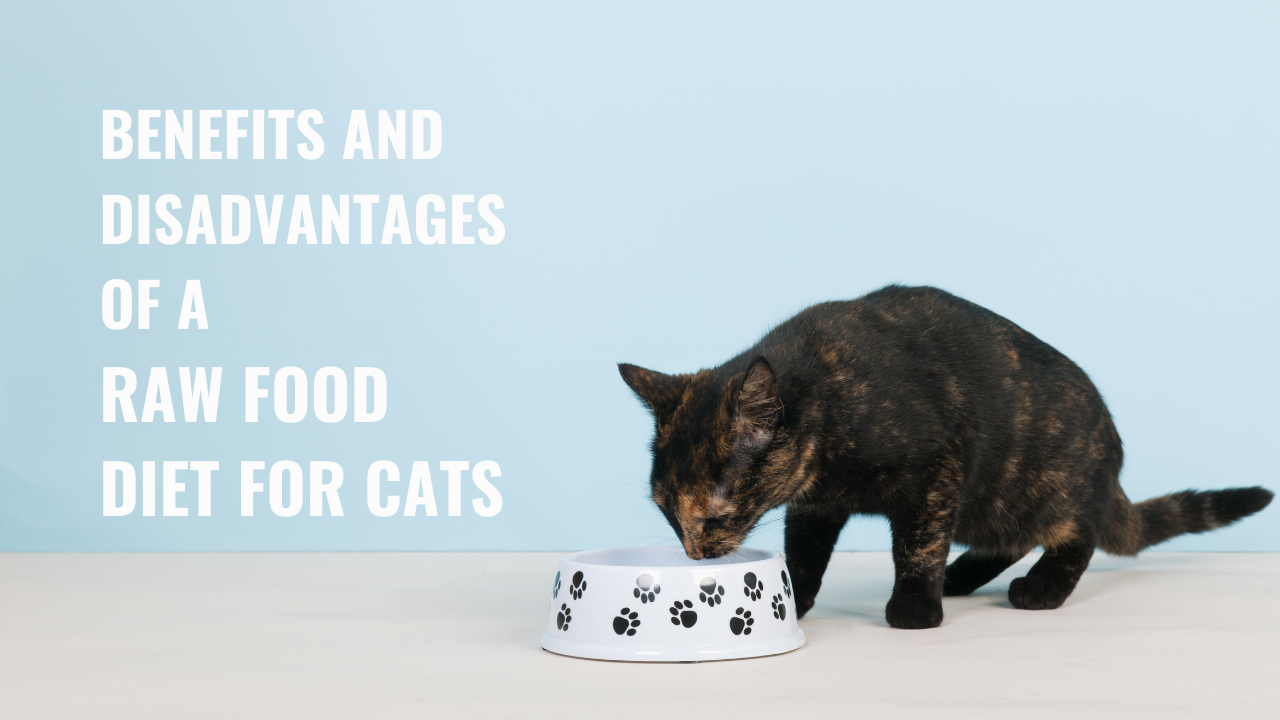
Your Guide to a Raw Food Diet for Cats
What is a Raw Food Diet for Cats?
In the wild, cats would eat a raw diet including the meat, bones, and organs of their prey. Feeding your cat a raw diet that mimics this ancestral diet can be healthy and beneficial for their health.
However, people have many misconceptions about what a healthy raw diet for cats entails. Before you head to your fridge and pull out a raw steak for your cat, it’s essential to know how to safely feed a raw diet to your feline friend.
The information below will give you information about raw diets, their benefits and disadvantages, and safety concerns.
You’ll also learn a few tips to help minimize safety issues. This information will help you make the right diet choices for your kitty’s health. Be sure to discuss any potential dietary changes with your vet first.
What is a Raw Food Diet?
The raw food diet for cats is often called a “BARF” diet. This acronym can mean either “biologically appropriate raw food” or “bones and raw food,” depending on who you ask. Raw diets mean feeding your cat uncooked muscle meat, organ meat, and bones.
Unlike some animals, cats are obligate carnivores. That means that your cat must eat meat to survive. Your cat doesn’t need vegetables or carbs. Instead, cats survive on a high-protein and high-moisture diet (naturally found in raw meat).
Meat contains helpful fatty and amino acids, vitamins, and minerals. When you cook meat, it often loses both these vital substances and needed moisture.
A healthy diet for your cat should mimic what cats eat in the wild. Raw diets should provide the same nutritional value cats would get by eating rodents, fish, birds, insects, and even reptiles in the wild.
This doesn’t mean you can just throw raw meat to your cat and let them eat until satisfied...
If you want to feed a healthy raw diet to your cat, you must make sure it has complete and balanced nutrition, by following set recipes approved by your vet.
Feeding raw food will not improve your cat’s health issues if the diet isn’t meeting their nutritional needs.
Benefits of a Raw Food Diet for Cats

Raw food diets aren’t just a fad but a way to provide lasting health benefits to your cat. Here are three top reasons why people love feeding their cats a raw food diet:
- The diet contains more moisture. Cats get water from their food, and dry cat foods don’t have the moisture they need. Raw meats provide your cat with lots of moisture, which will provide health benefits like a shinier coat.
- There aren’t processed ingredients. Feeding your cat raw food means you aren’t feeding processed foods your cat can’t digest well. Even commercially-made raw food diets have fewer processed ingredients than dry cat food.
- The diet provides high levels of protein. Protein is vital in maintaining essential bodily processes, and a lack of protein can lead to health problems including muscle loss, poor digestion and more.
- It can improve oral health. By chewing on raw, meaty bones, your cat exercises their teeth and scrapes off tartar and plaque. Be sure to supervise while your cat chews on any bones, and never provide cooked bones as these can splinter and cause dangerous health issues.
- It improves your cat’s health. Feeding a raw food diet can help give your cat a shinier coat, cleaner teeth, lessened risk of obesity, reduced risk of diabetes, and improved overall health.
These benefits make a raw diet attractive to many cat parents, and even supplementing your cat’s regular diet with a weekly portion of intentionally-created raw food can provide significant benefits to their overall health.
Disadvantages of a Raw Food Diet for Cats
Despite all the health benefits of raw food diets, there are some disadvantages. It’s important to consider these things before beginning a raw diet for your cat:
- There are some safety concerns. Dangerous pathogens pose a higher risk to your cat and family when using a raw diet. A full explanation of safety concerns will be explained in the section below.
- The diet must be complete and balanced. It’s important to pay attention to the nutritional content of what you feed your kitty. Getting a vet-approved recipe is essential. Otherwise, your cat may not be getting the nutrients they need.
- It takes a lot of time to prepare. The preparation time for a homemade raw diet is a major roadblock for families. However, some commercial raw diets are available. When choosing a commercial diet, make sure it meets the AAFCO standards for complete and balanced nutrition.
- It can be more expensive per serving. Feeding your cat a raw diet can cost more than traditional cat food, especially if you’re used to feeding your cat dry food.
You can minimize most of these risks with careful planning and risk management. For more information about how to prevent safety risks, read the “Safety Tips” section below.
Safety Concerns
Although a raw food diet can be healthy for your cat, there are some safety concerns. Below are the primary concerns surrounding this diet:
- There’s a higher risk of transmitting dangerous pathogens. Pathogens like Salmonella and E. coli can cause infections. While cooked food removes most of these, raw food does not. Most pathogens won’t cause problems for your cat, although they may pose a risk if your cat has immune issues.
- There’s an increased risk of cross-contamination. When you feed your cat a raw diet, there’s a chance you’ll expose family members to pathogens. Work surfaces, dishes, cat feces, and your cat itself can transmit these pathogens to family members.
The risks are more pronounced if you have someone in your home who is immune-compromised. You should carefully weigh the risks if your household includes young children or elderly adults, as they may experience greater risk when exposed to your cat’s raw diet.
Safety Tips

Despite the risks, there are some important steps you can take to reduce these risks. If you decide that the benefits to your cat outweigh the risks, here are some crucial tips to help you safely feed your cat a raw diet:
- Prepare your cat’s food in one area of the home. Make sure to clean and sanitize all surfaces after you make your cat’s food. Keep raw food separate from other food in your home. When possible, use a bleach solution to maintain a sanitary food prep space.
- Take care when handling raw meat. Your meat should come from a reliable source. When working with raw meat, use gloves. It also helps to handle raw meat when it’s frozen to reduce the risk of transmitting pathogens.
- Feed your cat in an easy-to-clean area. Put your cat’s food in a place that can be easily sanitized after meals. Tile and wood flooring are easier to sanitize than carpet. Make sure your cat’s bowl is not near carpeting or upholstered furniture. After your cat eats, sanitize the food bowls and immediate area.
If you take these precautions, you can mitigate the risks to your household and your cat. There are safe ways for you to feed your cat a raw diet.
Conclusion
Feeding your cat a raw food diet can improve their overall health. However, it’s essential to make sure that you’re providing your cat nutritionally complete meals. If you have questions about feeding a raw diet to your cat, consult your veterinarian or a veterinary nutritionist.
A raw diet can be a vital part of caring for your cat’s overall health, as long as you make sure to do it the right way.
Even if you can’t afford to feed raw for every meal, the nutrients provided by weekly raw meals can leave a significant impact on your cat’s health.
It is possible to purchase raw food, typically frozen to last longer and reduce pathogens. You can try freeze-dried options as a simple way to get started with this diet.
For example, Primal Freeze-Dried Formulas offer you the convenience and benefits of a well-balanced, safe and wholesome raw-food diet without having to grind, chop, measure or mix the ingredients yourself.

